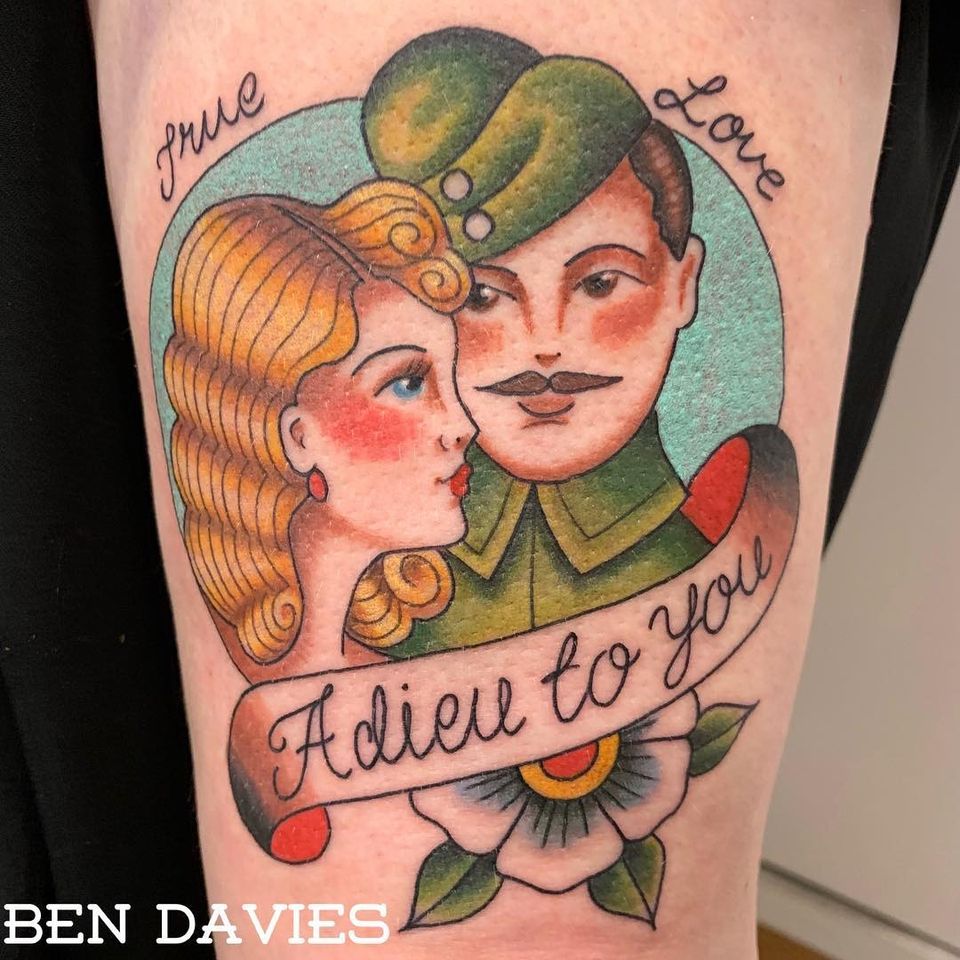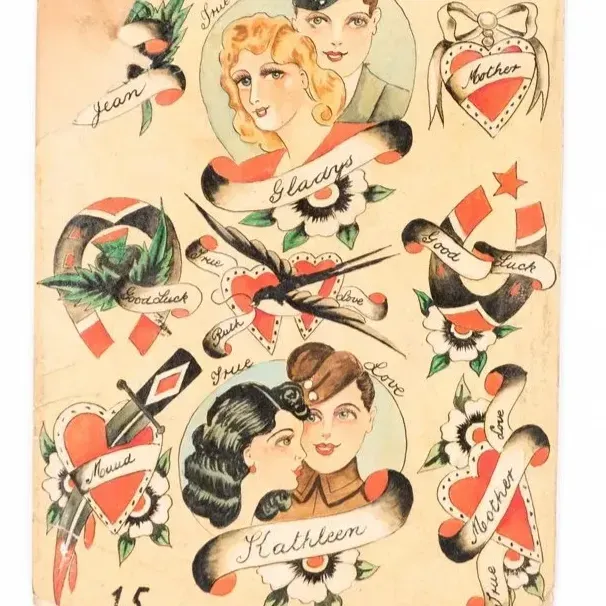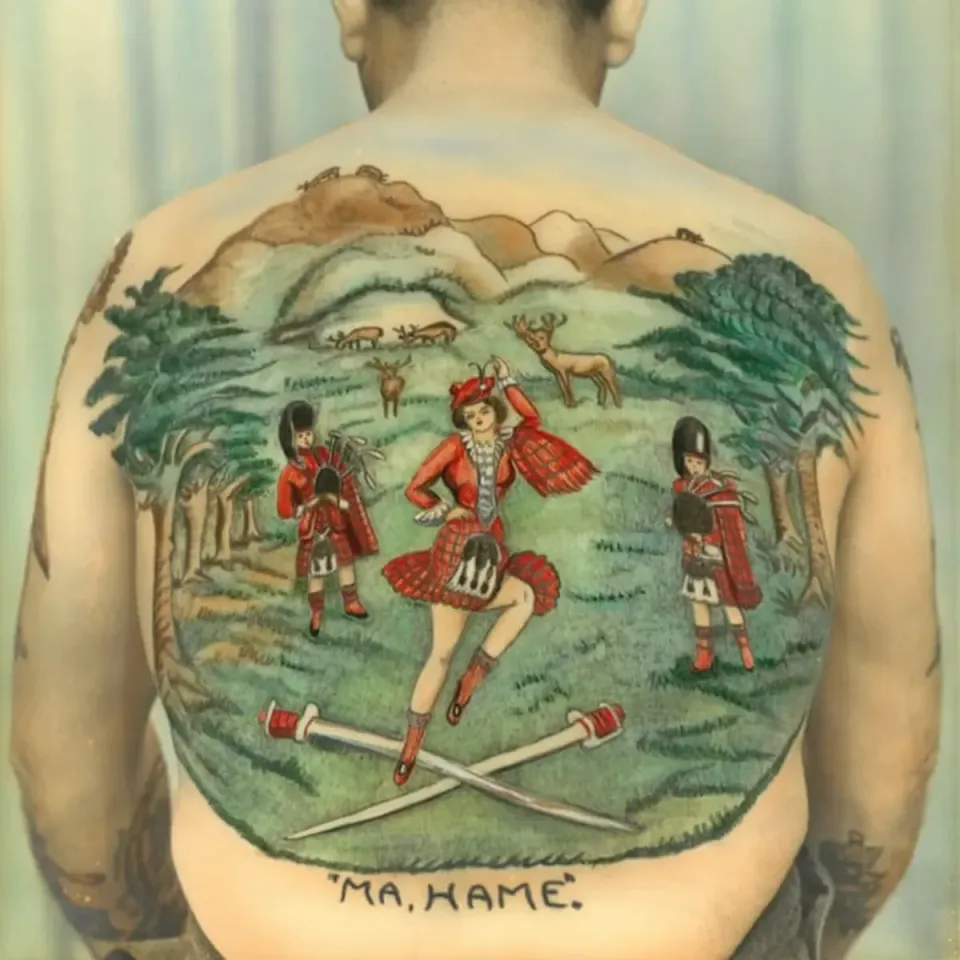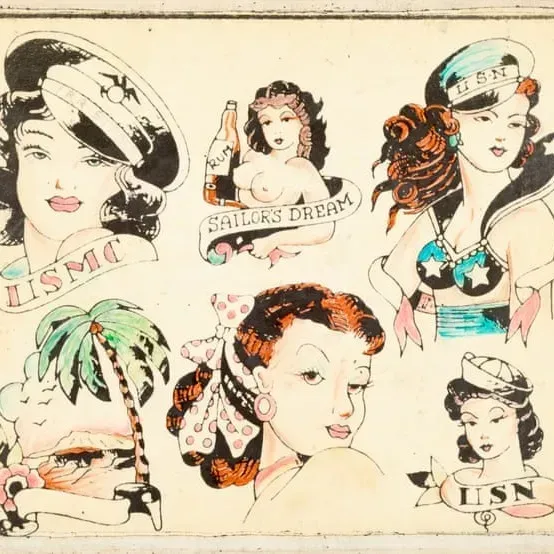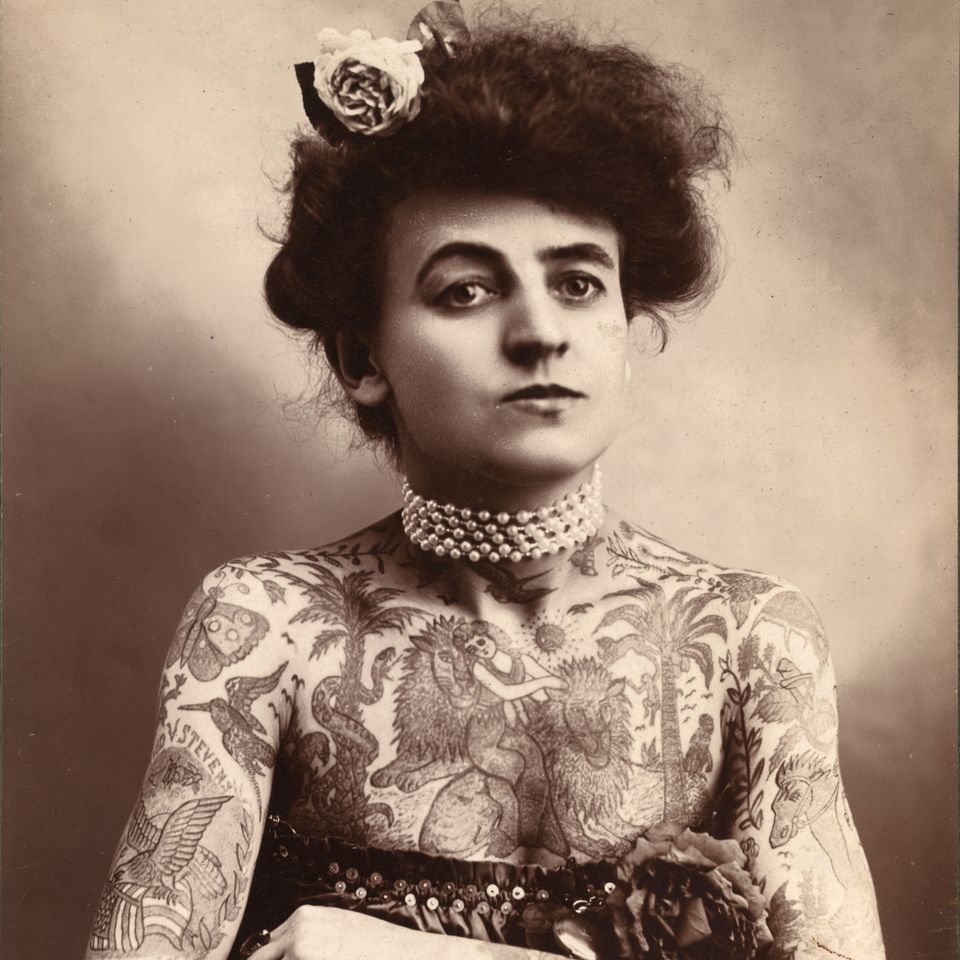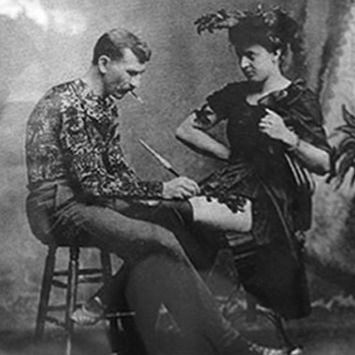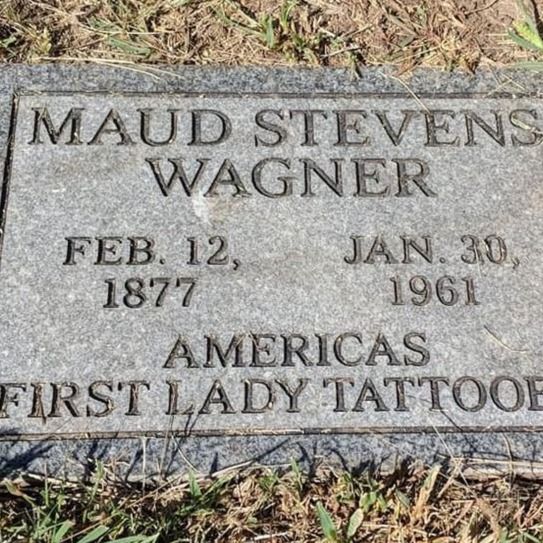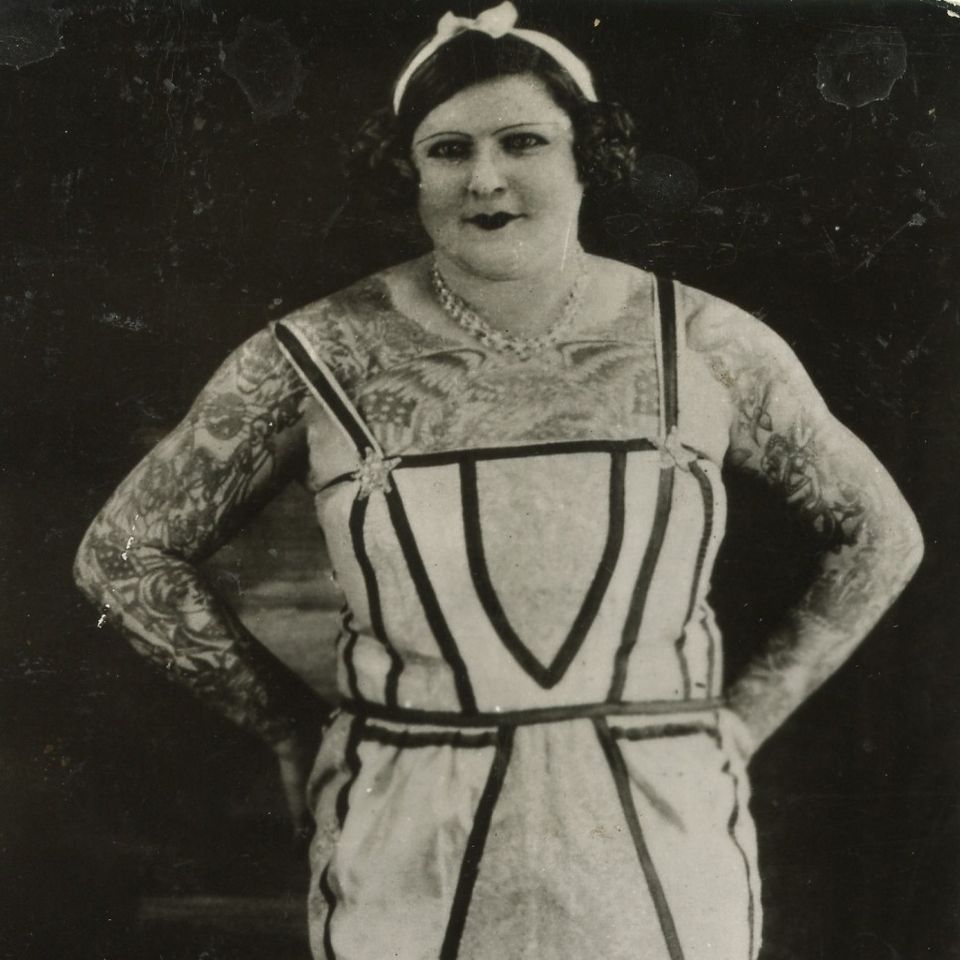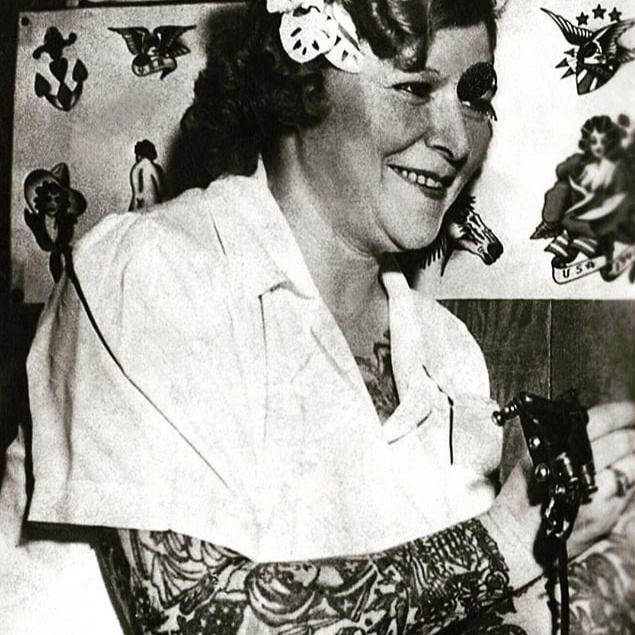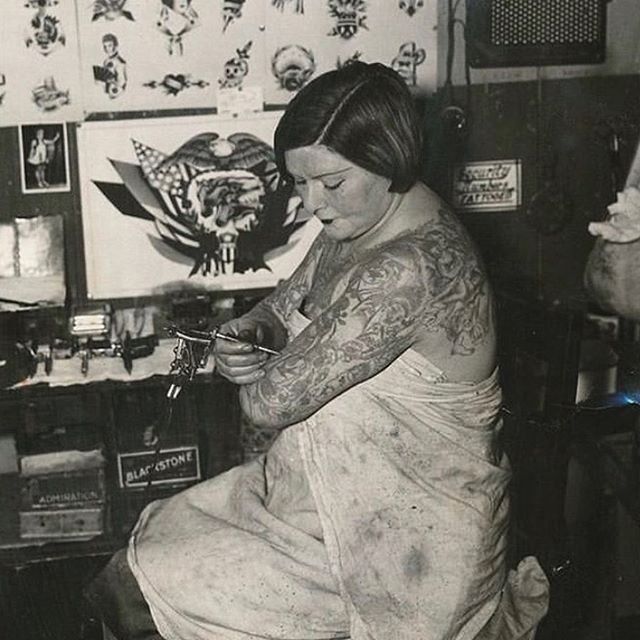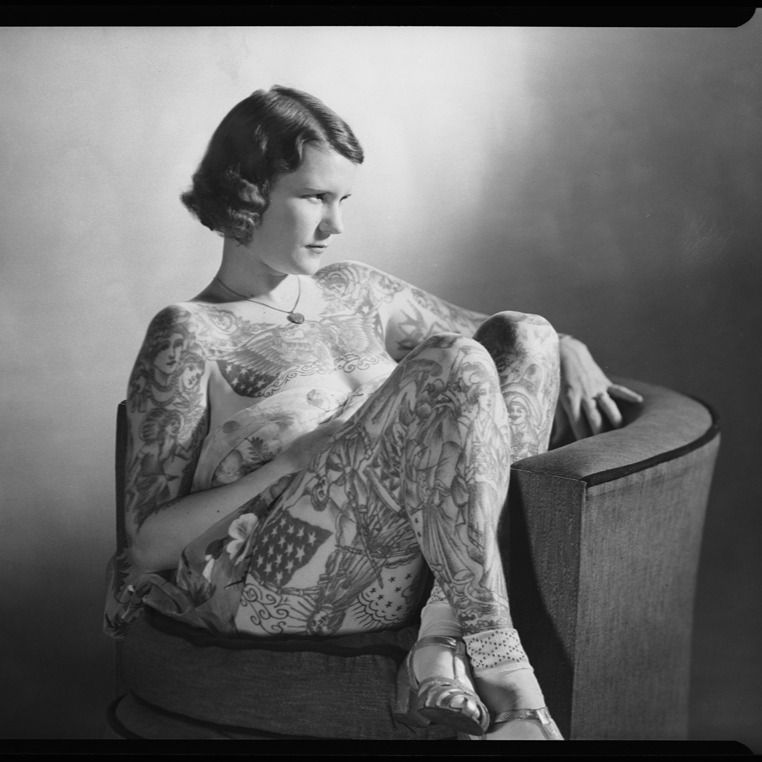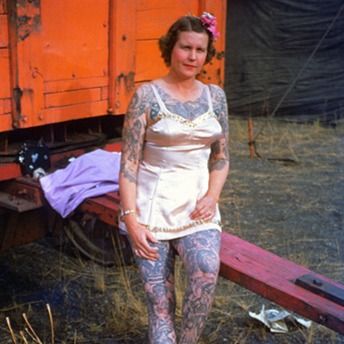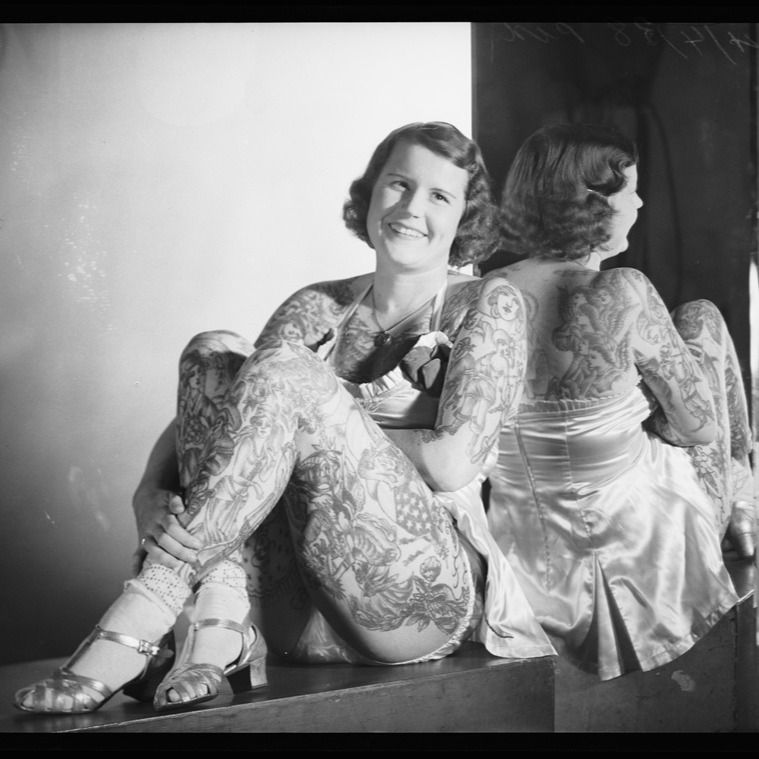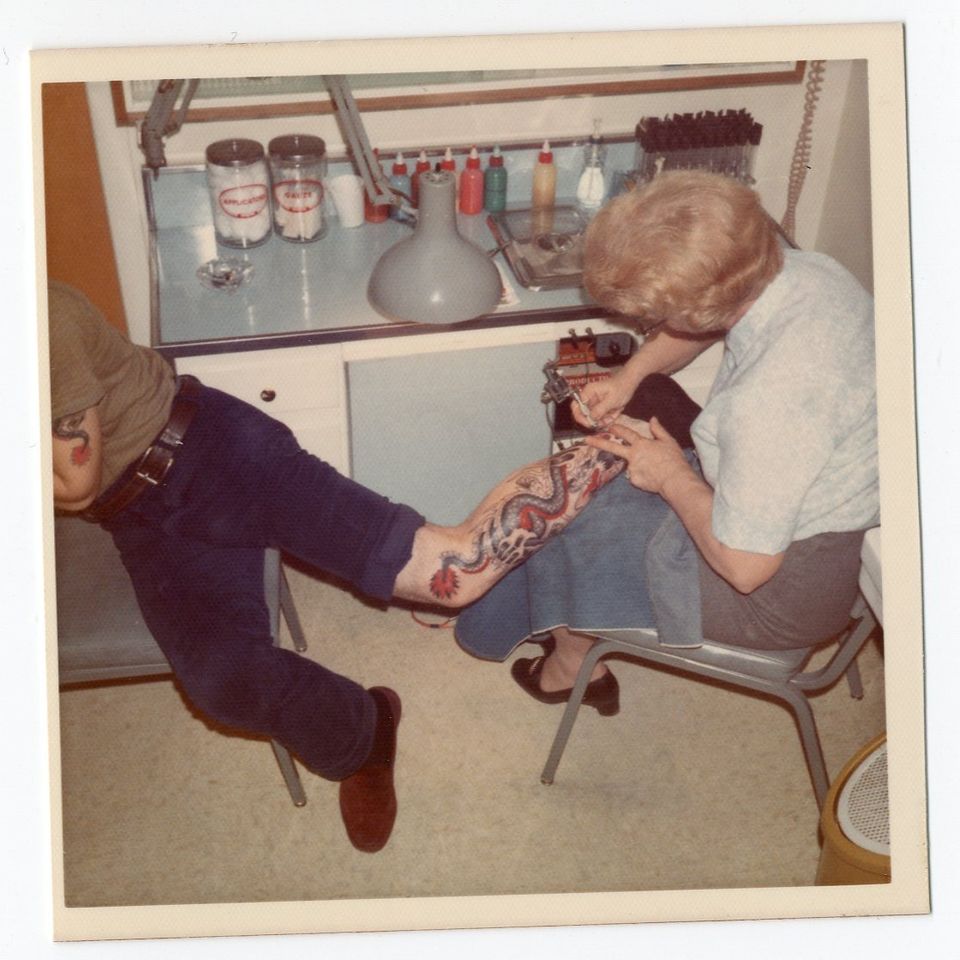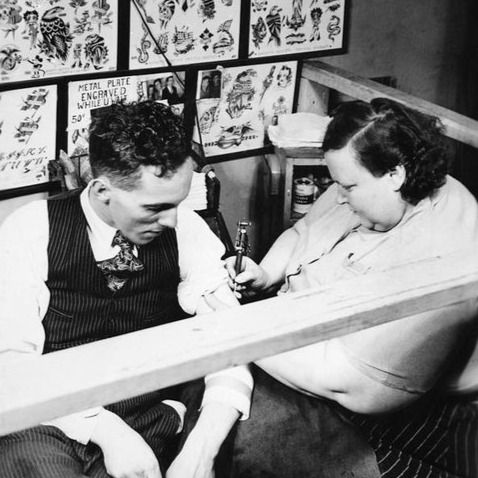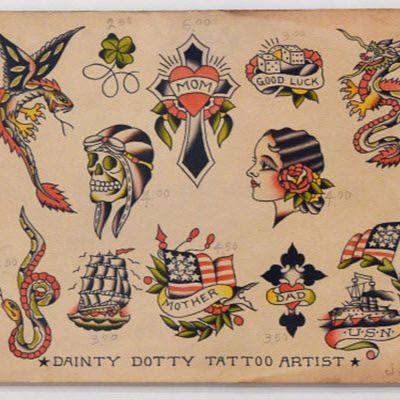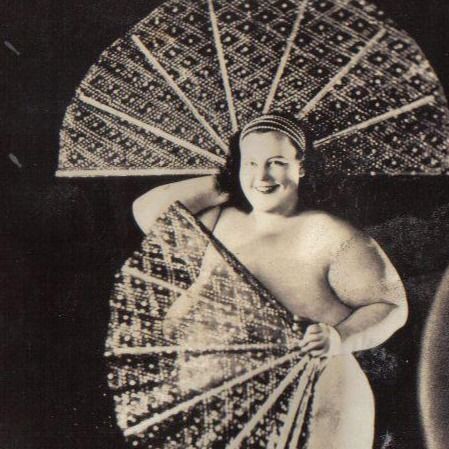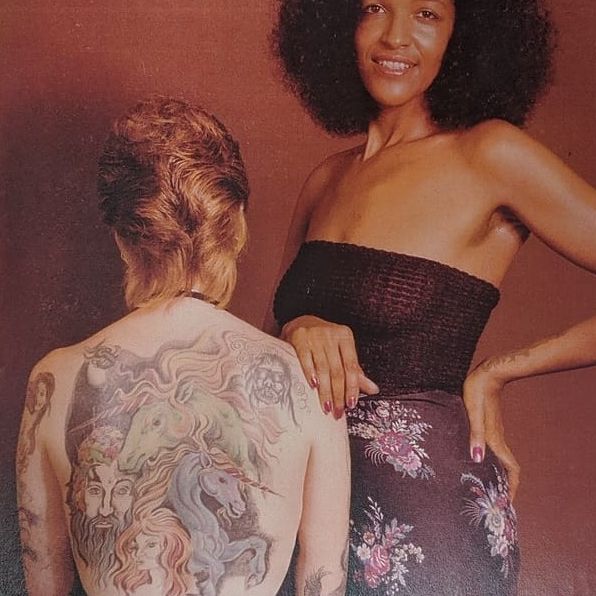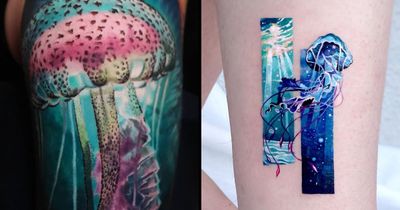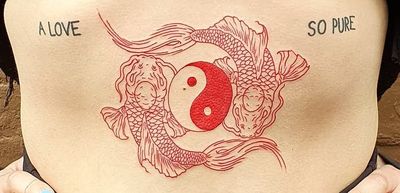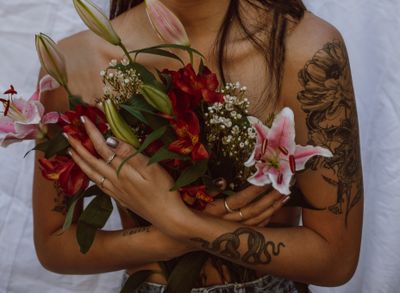6 Historic Women Who Shaped Tattoo History
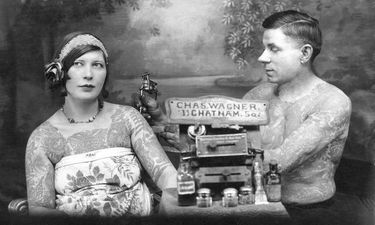
Summary
We talk about the revolutionary women of the 19th century who paved the path for female tattoo artists today.
From rocket science to tattooing, women have played a crucial role in advancing, innovating, and pioneering a myriad of industries the world over. Unfortunately, we seldom hear about the women who deviated from the crowd, who achieved incredible feats against terrible odds, and who improved upon the world we live in even though they weren’t asked to. It is important to remember that many of the female tattoo artists we will explore here began their journeys in the early 1900s, a time when women still had very little rights politically and otherwise, a time where women were expected to be caregivers, homemakers, and dutiful wives.
Tribute to Jessie Knight by Derryth Ridge #DerrythRidge #JessieKnight #tattooflash #pinup
While we can agree that women’s rights have certainly changed for the better since the early 1900s, there are still many battles left to fight for true equality.
So here’s to the early female tattoo artists who chose for themselves, who did not allow men or society to dictate their role, and who will be long celebrated and remembered for their incredible contribution to the art form of tattooing.
Modern take on a Jessie Knight design by Ben Davies #BenDavies #JessieKnight
Jessie Knight: England's First Female Tattoo Artist
Born in 1904, Jessie Knight was the first and only female tattooist to work professionally in Britain for over 40 years. Jessie’s longtime love affair with tattooing was inherited from her father Leonard, who had traveled extensively as a sailor and worked as both a circus performer and a tattoo artist. Jessie spent her childhood traveling alongside her father as he performed in daredevil acts and tattooed clients and performers on the side. In her early teen years, Jessie began to be included in her father’s wild and dangerous performances and was even rumored to have been shot twice by him while posing as his sharpshooting dummy.
As she got older, Jessie commanded her own crowds as a stuntwoman who rode horses bareback, even touring the country with her brother for some time. At age 17, Jessie was taught how to tattoo by her father and her life and career took a different trajectory. Just a year later, when Jessie was only 18, her father entrusted her to run the family tattoo shop in his absence, as he would be returning to sea. Jessie took over her father’s business successfully, consistently surprising clients with how young she was and the fact that she was a woman.
Sadly enough, it was Jessie’s husband who seemed to have the biggest problem with her career as an artist. It was said that he was frequently abusive to Jessie, causing her to endure numerous miscarriages. She eventually managed to escape the marriage and leave her old life behind, opening up her first tattoo studio in 1936. As her business grew, she marketed herself as “Jessie Knight: Expert Freehand Lady Tattoo Artist”. Her unique freehand method was achieved by drawing on the skin with ink-soaked matchsticks and then tattooing over the stencil.
To everyone’s surprise, in 1955, Jessie Knight won 2nd place in London’s “Champion Tattoo Artist of all England” competition, which was an unfathomable accomplishment for a woman of that period.
In her later years, Knight retired from tattooing but continued to do pieces within her home for friends and family members. When she passed at age 88 in 1992, she left behind a prolific and record-shattering career and has remained a feminist symbol for many creative women.
Maud Wagner: America’s First Female Tattoo Artist
The first female tattoo artist in America was Maud Steven Wagner of Lyon County, Kansas. Born in 1877, Maud grew up in an impoverished home with little opportunity available for her. In her teen years, Maud decided to quite literally “run away and join the circus”, becoming a talented contortionist and aerialist, and leaving behind her life of poverty and boredom. While traveling with the circus, Maud encountered a young Gus Wagner who was eager to take her out on a date. At this time Gus was heavily tattooed and had gained notoriety as a talented artist. Maud was intrigued by his body art and had agreed to go on a date with him in exchange for tattooing lessons. Through this chance encounter, the two become close and fell in love, and Maud became the first woman to learn and master the traditional hand-poked tattoo method. This became her preferred method of tattooing and until she died in 1961, she had never used an electric machine.
Eventually, Maud and Gus left the circus life to tattoo and travel the country full time. Aside from being the first female tattoo artist in America, Maud is also credited with playing a pivotal role in bringing tattooing inland and helping to spread the art form to a wider audience. She and her husband Gus passed tattooing onto their daughter Lovetta, who was trained in the practice as early as 9 years old and went on to become a successful tattoo artist herself. Although Maud approved of her daughter tattooing, she had made Gus promise that he would never tattoo her, and Maud wouldn’t either. This made their daughter Lovetta one of the few tattoo artists in existence who never had a tattoo themselves.
To this day, Maud Wagner and her daughter Lovetta are fondly remembered for their contributions to tattooing and the women’s emancipation movement.
Mildred “Millie” Hull: “The Queen of the Bowery”
Millie Hull was a revolutionary woman, known during her time as the “only female tattoo artist in NYC”. Born in 1897, Millie left school at 13 and decided to join the circus, becoming a burlesque dancer, and eventually being tattooed by Charlie Wagner. This encounter sparked Millie’s curiosity, and soon she found herself learning to tattoo on her own skin. Unlike many other female tattooers of her time, Millie’s skills were mainly honed on her own accord, and not passed to her through a boyfriend or husband.
Millie eventually opened a shop in Manhattan’s Bowery neighborhood called “Tattoo Emporium”. She made a successful career out of tattooing and was one of the only women of her time to work on the Bowery, much less operate a business. In 1943 Hull received the honor of being declared “NYC’s only female tattoo artist”, a true testament to how tough and talented she was.
Tragically, Mildred Hull’s incredible life came to an end at age 50, in 1947. Her cause of death was determined to be self-poisoning, creating a heart-wrenching ending to a life that inspired so many, and paved the path for female tattoo artists to come.
Betty Broadbent: The 20th Centuries Most Photographed Tattooed Woman
Betty Broadbent is a feminist icon, female tattoo artist, and talented performer whose work served to disrupt the narrow standards for female beauty. Born in Philadelphia in 1909, Betty became interested in tattooing at the age of 14, when she was met a heavily tattooed man by the name of Jack Redcloud on an Atlantic City boardwalk. Entranced by his tattoos, Betty was eventually introduced to Redcloud’s tattoo artist, the legendary Charlie Wagner. In 1927, Betty decided to cover her entire body in tattoos, having Wagner and several other artists place over 565 tattoos on her skin.
After covering herself in tattoos, Betty ended up finding employment with the circus thanks to Charlie Wagner’s connection to Clyde Ingalls. Broadbent worked displaying her body art and eventually learned to ride horses and mules.
In 1939, Betty took one of the most important stages of her life, participating in a beauty pageant at the World Fair. This was a daring move for the times, considering that tattooing was widely found to be unacceptable to mainstream society. In this act of bravery and defiance, Betty sparked a flame and began to pave her own path, helping to liberate women from the confinement of conventional beauty standards, and drawing attention to tattooing as an art form.
Outside of showcasing her body art with the circus, Broadbent also worked as a tattoo artist, traveling around the country and working in cities like Montreal, San Francisco, and New York.
In 1937, Betty decided to travel internationally, proudly displaying her body art to circus-goers in New Zealand and Australia. Betty eventually returned to the United States where she continued to perform and travel with circus sideshows. In 1981, Betty was the first person to be inducted into the tattoo hall of fame. Several years later, Betty died peacefully in her sleep, at the age of 73.
Today, Betty is famously regarded as the most photographed tattooed lady of the 20th century. Her work in entertainment and tattooing is widely recognized as helping to change female beauty norms, and inspiring young women to pursue individuality.
Esther Evans: Historic East Coast Female Tattoo Artist
Esther Evans is arguably one of the most talented and underrated female tattoo artists of the 19th century. Her career in tattooing began when she learned the art form from her husband, renowned tattoo artist, Sailor Eddie. Esther flourished as an artist, creating a long standing legacy in her community and throughout the country. A student of August Coleman’s work, Evans was known for her bold, bright, and colorful style, often gaining the attention and admiration of those who witnessed her work.
Throughout Esther’s incredible career she owned and operated two tattoo shops alongside her husband in Philadelphia, Pa, and Camden, NJ. The shops were successful and employed legendary artists like Paul Rogers, who worked with Esther and her husband at two different locations. Though Esther was able to accomplish a great deal in her career as an early female tattoo artist, her legacy was sadly
overshadowed by that of her husband, Sailor Eddie.
Thankfully, women today are beginning to become familiar with the work of Esther Evans and her undeniable contribution to American Traditional tattooing. As both a businesswoman and a brave artist, Evans has left behind an incredible legacy for young girls and women everywhere.
Dainty Dotty: 19th Century Female Tattooer and Business Owner
Dainty Dotty began her career in the public eye as the infamous “fat lady” in the Ringling Brother’s Circus during the 1930s and 1940s. Throughout her travels as an entertainer with the circus, Dotty eventually crossed paths with the legendary tattoo artist, Owen Jensen who taught her the art form of tattooing while she was staying in Detroit. Shortly after meeting, Dotty and Owen wed and the two pursued their love for tattooing as a couple.
Moving away from Detroit, Dainty Dotty and her husband settled in California together, opening a successful shop on the pike in Long Beach. The two also eventually opened up a tattoo supply company, servicing artists around the country with the tools they needed to create permanent art. Her husband Owen Jensen was said to have tattooed her body over the years, but unfortunately, no pictures are available today of her unique pieces.
One of Dainty Dotty’s biggest claims to fame was her title as the world’s heaviest female tattoo artist, weighing in at over 600 lbs during her career. Tragically, Dotty’s elevated weight resulted in an increased strain on her heart, causing her to suffer a fatal heart attack in 1952. Although her death was a terrible loss to the community, she is remembered today for her legacy of female empowerment, body positivity, and business savvy.
Bonus: Living Legend, Jacci Gresham
Although she may not be from the 19th century, Jacci Gresham is the first Black Female tattoo artist in the USA. Her tag line, "Look Better Naked", speaks to her fabulous confidence and creativity. Based out of New Orleans, Jacci is definitely a pioneer who deserves the respect and accolades given to women who have gone through great adversity to be where they are now. Inspiring so many of the people in the community who hope to make a lasting change, Jacci is not only worth mentioning due to her impact on the industry and community, but for serving as an example of what hard work, resilience, and beautiful artwork truly can accomplish.
Jacci Gresham #JacciGresham #aartaccenttattoosandpiercing

